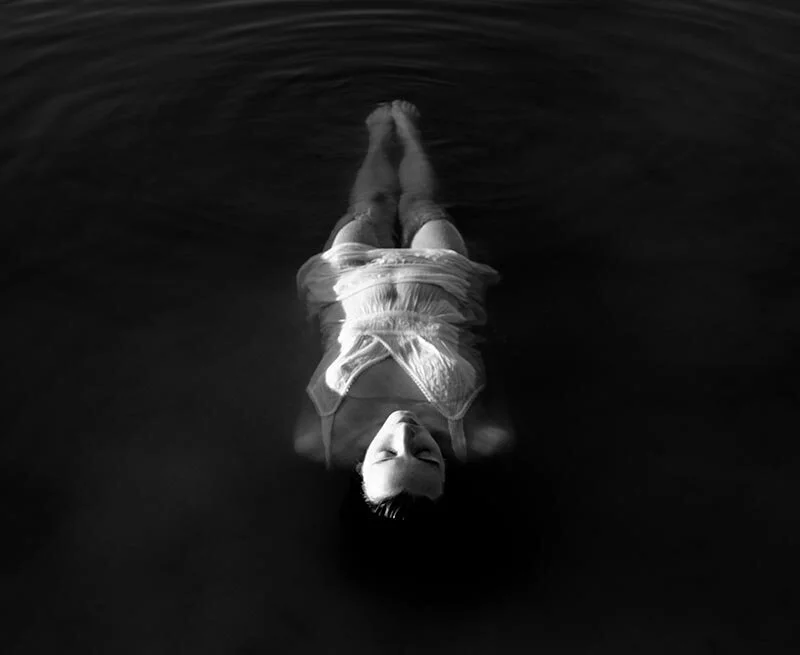Attend Your Own Funeral With Extreme Embalming
People are ditching open caskets and posing the recently deceased as if they were mannequins, doing the things they loved when they were still alive.
By Elle Carroll
“Here lies Jane Doe, who loved nothing more than taking selfies of herself in cute outfits.” Art by Hannah Buckman
Attending your own funeral is a total impossibility. It has to be because, uh, that’s how death works. But for an adventurous few, that’s starting to change.
Meet extreme embalming, a method of displaying dead bodies at wakes or funerals, to make them look as if they were still alive. Like mannequins, they are posed in ways that reflect the deceased’s personality and the things they loved doing.
Granted, the display of the post-mortem body is nothing new. Lying in state has been around for centuries, and it often involves a full view.
Gandhi’s body was draped in white cloth and surrounded by flowers after his death.
Kim Jong-il’s body got the glass coffin treatment, attended by an honor guard toting assault rifles.
In 1984, Chicago drug kingpin Willie M. Stokes attended his funeral propped up in a coffin that looked like a Cadillac Seville.
Champion thoroughbred racehorse Man o’ War, Chairman Mao, Moonie cult leader Sun Myung Moon, and Pope John Paul II have all been displayed after kicking the bucket.
But now you no longer have to be a despot or a Derby winner to insert a little panache into your post-mortem celebrations. That’s where extreme embalming comes in — a.k.a. the practice of posing and dressing up a dead body in such a way that it reflects the personality and interests of the deceased.
Take Miriam Burbank, for example, whose funeral caught the internet’s attention in 2014 because her body was propped sitting upright in a chair, her black and gold fingernails — New Orleans Saints colors — clutching a menthol cigarette and a glass of Busch.
Burbank isn’t the only now-dead person doing this. Just two months prior, deceased socialite and philanthropist Mickey Easterling (quietly) greeted her own funeral guests sitting upright, draped in a pink feather boa, and “drinking” a glass of champagne. There was a pack of cigarettes sitting on the side table next to her, although no one offered to give her a light.
Miriam Burbank pictured at her own funeral, drink in-hand. (Screengrab)
New Orleanians seem to have cornered the market on “extreme embalming.” It is, after all, the city where you can buy bumper stickers that read “New Orleans puts the fun in funeral.”
It’s also the home of the American jazz funeral — an exuberant celebration-cum-regional-tradition traceable some 400 years back to West Africa, brought to the U.S. by slaves. Following the Civil War, jazz funerals became most commonly associated with impoverished people and musicians, often funded by local social clubs.
Related:
“7 Creative Cremation Ideas Cooler Than Urns”
“Awesome Things You Can Do With Dead Bodies Besides Bury Them”
During the 20th century, the contemporary jazz funeral became a bona fide New Orleans establishment, complete with brass bands, horse-drawn hearses, and massive processions through the streets that ended with dancing and music. The largest in history was held in 2006, honoring 1,700 Hurricane Katrina victims.
It seems this kind of funerary celebration naturally demands a little originality and extravagance. At the 2012 jazz funeral of “Uncle” Lionel Batiste, the New Orleans musician and local legend stood straight up, hands clasped around his trademark cane. His bass drum and Treme Brass Band uniform were nearby.
In some ways, Batiste was a pioneer of these eccentric funeral appearances. His son, Lionel Batiste Jr., promised him an original send-off, consulting with Louis Charbonnet, owner of the Charbonnet Labat Funeral Home. Prior to Batiste’s funeral, Charbonnet said he had never fielded a request to pose the body in such an unconventional way.
Now Charbonnet’s funeral home is the go-to spot when it comes to extreme embalming — although it’s not the first. In 2008, Marin Funeral Home in San Juan, Puerto Rico, stood Angel Pantoja Medina’s body behind his coffin for his wake with a New York Yankees flat-brim atop his head and a massive crucifix chain around his neck. After that, David Morales Colon was embalmed in biking gear and then posed atop his motorcycle. Boxer Christopher Rivera got his send-off in a boxing ring at the local recreation center. The list goes on.
There are, one could argue, worse ways to go.

















Creative uses for ashes abound as people increasingly seek personalized memorials for their loved ones.